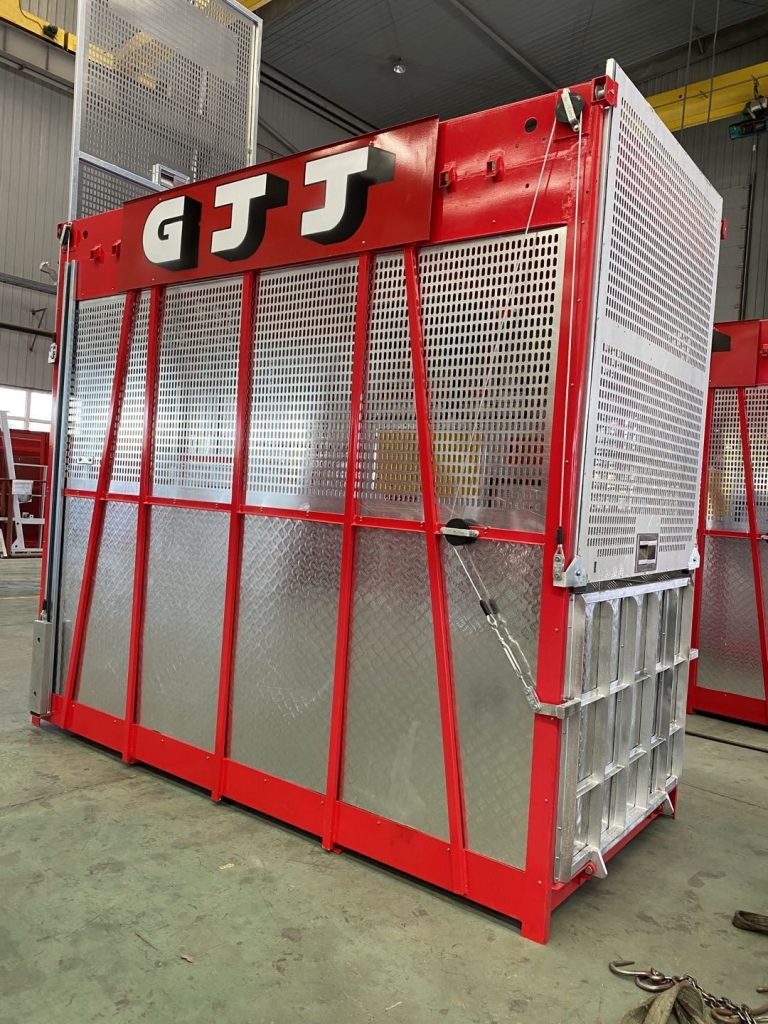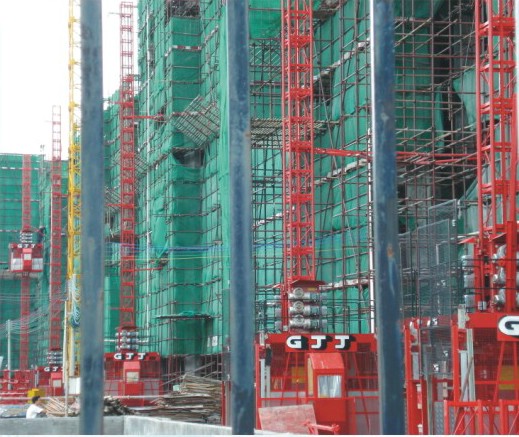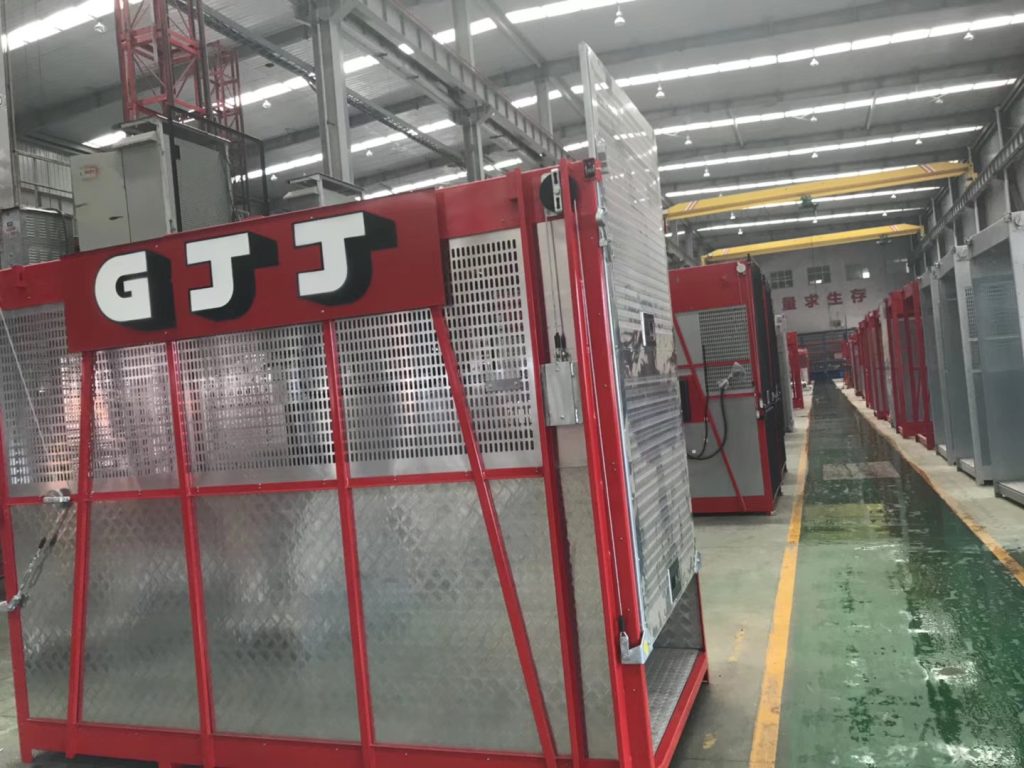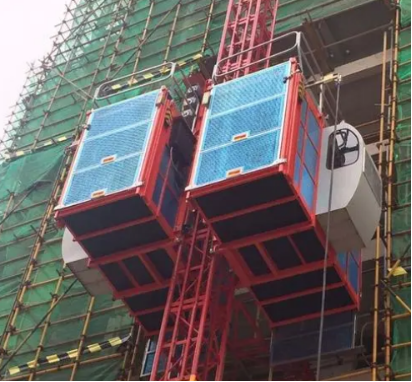In the field of heavy construction, tower cranes are indispensable machinery, capable of lifting and moving heavy objects at heights. The core of each tower crane’s hoisting mechanism contains a key component: the tower crane pulley system. This system ensures the smooth and safe operation of lifting by guiding the steel wire rope and evenly distributing the load.
Among the numerous components of the pulley tower crane system, the pulley itself plays a crucial role in load management, efficiency and safety. But not all pulleys are the same. There are mainly two commonly used materials in the market: steel and castings (usually cast iron or ductile iron). Each material has its own advantages, disadvantages and ideal application scenarios.
This article will provide a comprehensive overview of the tower crane pulley system, delve into the specific characteristics of steel and cast pulleys, and offer a comparative analysis to help determine which solution is more suitable for the harsh construction site environment.
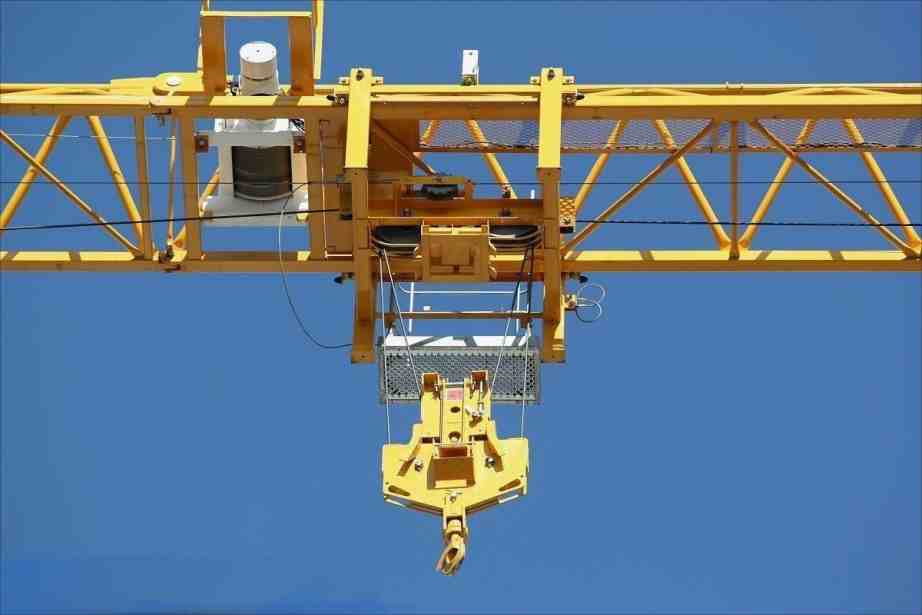
Overview of Tower Crane Pulley Systems
The pulley system of a tower crane is essentially an application of fundamental physics, aiming to provide mechanical advantages. This system is also known as a pulley block, consisting of a series of pulleys or pulleys through which steel wire ropes pass. By increasing the number of rope sections supporting the load, the force required to lift the load will be reduced accordingly. This enables the lifting device of the crane to lift a load far exceeding that of direct pulling.
The pulley system is integrated into several key components of the tower crane. The pulleys are located at the end of the boom, on the trolley moving horizontally along the boom, and within the hook assembly connected to the load. The smooth and reliable operation of these pulleys is of vital importance. Any malfunction may lead to disastrous consequences, including load dropping and structural damage to the crane itself. Therefore, the materials used to manufacture these pulleys are a subject of close attention and consideration in the engineering community.
What Are Steel Tower Crane Pulleys?
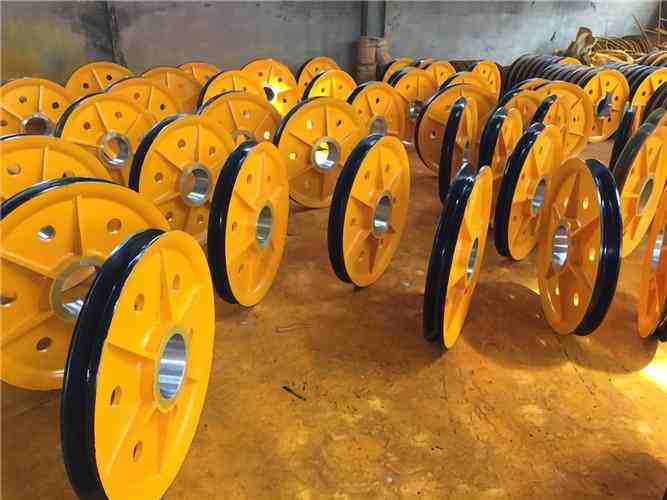
Steel tower crane pulleys are usually forged steel or high-strength alloy steel. The pulleys possess excellent mechanical properties and are wear-resistant and deformation-resistant under extreme loads.
Advantages of Steel Pulleys:
- High Load-Bearing Capacity
Steel pulleys can resist high mechanical stress and are therefore suitable for high load capacity tower cranes that operate under severe conditions.
- Superior Durability
Steel forged pulleys possess excellent wear resistance, especially in continuous operation and high-speed lifting.
- Precision Machining
Steel allows precision CNC machining, enabling closer tolerances and smoother rope engagement.
- Longer Lifespan
Steel pulleys, with proper maintenance, typically last longer than cast pulleys, reducing the number of replacements.
Disadvantages of Steel Pulleys:
- Heavy Weight: Steel is heavier than cast iron, added to the total crane load and possibly affecting energy efficiency.
- Higher Cost: Process of production and material price compel steel pulleys to be more expensive.
- Corrosion: Without a coating, steel is more likely to rust, especially in coastal or tropical environments.
What Are Casting Tower Crane Pulleys?
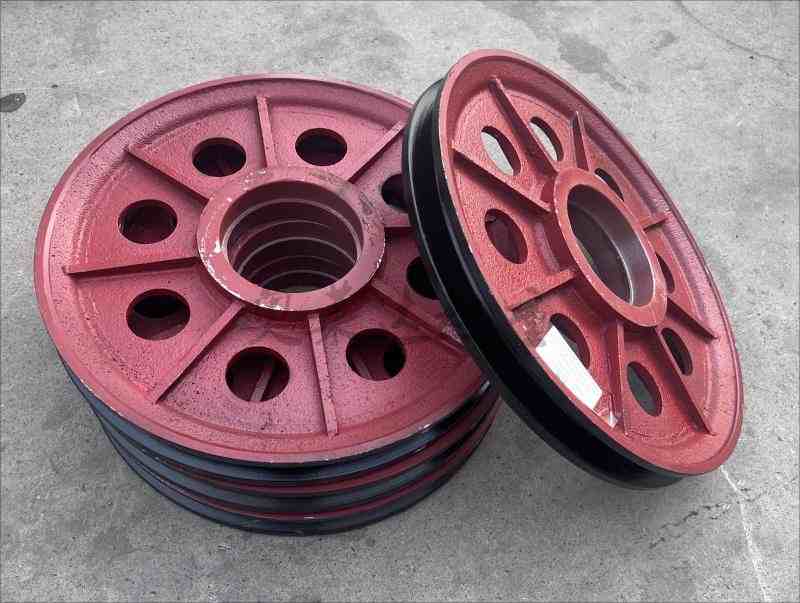
The casting pulleys are produced from spheroidal graphite iron (ductile iron) or grey cast iron. The material is cast into a mold to obtain the shape, allowing for economical and flexible production.
Advantages of Casting Pulleys:
Cost Effectiveness
Casting is less costly than forging, making cast pulleys an attractive option for cost-saving projects or crane rental companies.
Shock Absorption
Cast iron pulleys possess a natural resonance and vibration absorption, which is beneficial in some lifting operations.
Easier to Produce
Complicated shapes and larger pulley diameters are easier to produce by casting processes.
Good Wear Performance (with Proper Treatment)
Cast pulleys can exhibit acceptable wear resistance for medium-load operations when treated or surface-hardened.
Disadvantages of Casting Pulleys:
- Brittleness: Cast iron is brittler than forged steel and hence is more prone to cracking under impact or overload.
- Lower Strength: Cast pulleys have lower tensile strength, which limits their use in ultra-heavy lifting.
- Porosity Risks: Poor casting can result in internal defects such as air pockets or shrinkage cavities.
Comparative Analysis: Steel vs. Casting Tower Crane Pulleys
Here’s a side-by-side comparison of the two pulley types based on essential performance factors:
| Feature | Steel Tower Crane Pulley | Casting Tower Crane Pulley |
| Weight | Heavier | Lighter |
| Shock Absorption | Moderate | Good |
| Corrosion Resistance | Requires coating | Moderate (depends on type) |
| Cost | Higher | Lower |
| Machining Precision | Excellent | Moderate |
| Best For | Heavy-duty cranes, long-term use | Medium-duty cranes, cost-conscious projects |
In short, steel pulleys offer better performance and reliability, while casting pulleys are more economical and suitable for lower-intensity applications.
How to Choose the Right Pulley for Your Tower Crane
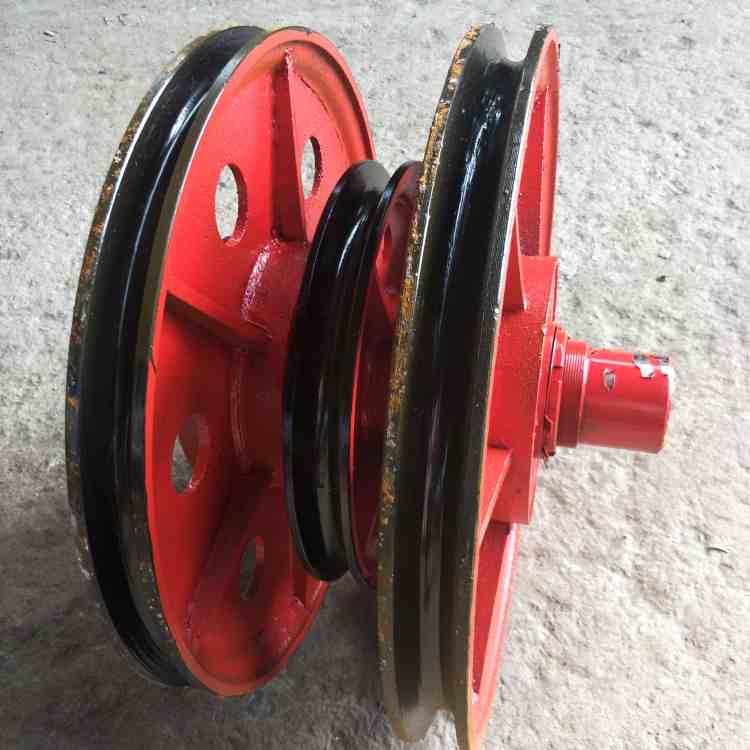
The choice between steel and cast tower crane pulleys depends on several practical factors:
Load requirements
If your crane needs to lift very heavy materials, steel pulleys are more suitable due to their excellent tensile strength.
Usage frequency
Steel pulleys offer better long-term durability for continuous or high-intensity use. Cast pulleys are suitable for occasional or light to moderate operations.
Project budget
If budget constraints are the main consideration, casting pulleys is an economical and efficient solution. However, since steel pulleys need to be replaced less frequently, the total life cycle cost can be reduced.
Environmental conditions
In Marine or high-humidity environments, please choose materials with corrosion resistance or ensure that the steel pulleys are properly rust-proof treated.
Safety margin
In high-risk environments such as skyscraper construction, even if the initial cost is high, stronger and more reliable components should always be chosen.
Manufacturer’s reputation
Whether you choose steel or cast pulleys, you should cooperate with a reliable pulley tower crane manufacturer, who can provide quality control, material certification and after-sales support.
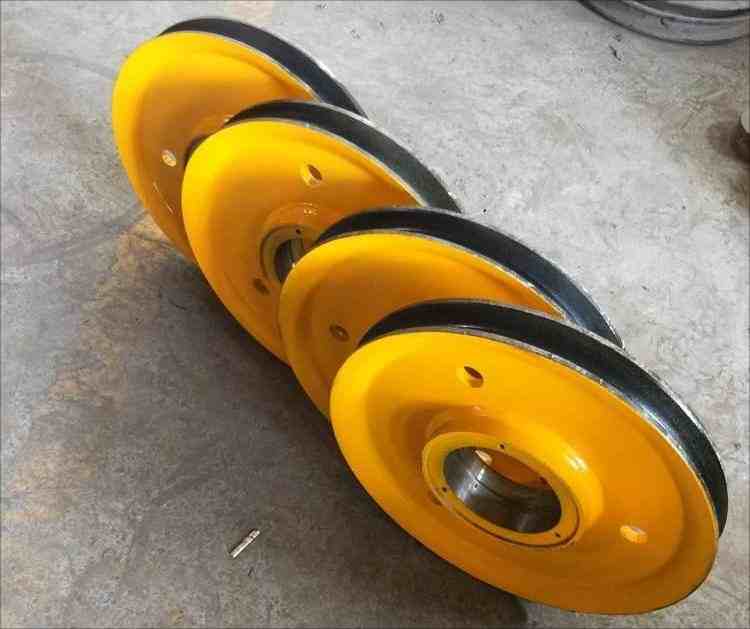
Conclusion
The choice between steel pulleys and cast pulleys is not about which is inherently superior, but what is superior for your specific application.
Need a trusted pulley solution for tower cranes? Our organization provides the entire line of steel and cast pulleys in standard sizes and special dimensions. Call us today for professional advice or a quote.
Related Products
Construction Material Hoist
Use high-quality steel
Simple and cost-saving
SC Series Frequency Conversion Hoist
Frequency conversion control system.
Smooth starting and braking, less mechanical…
GJJ Construction Site Hoist
With a lightweight…
Builder Hoist Lift
Flexible
Multifunctional
Easy to operate

